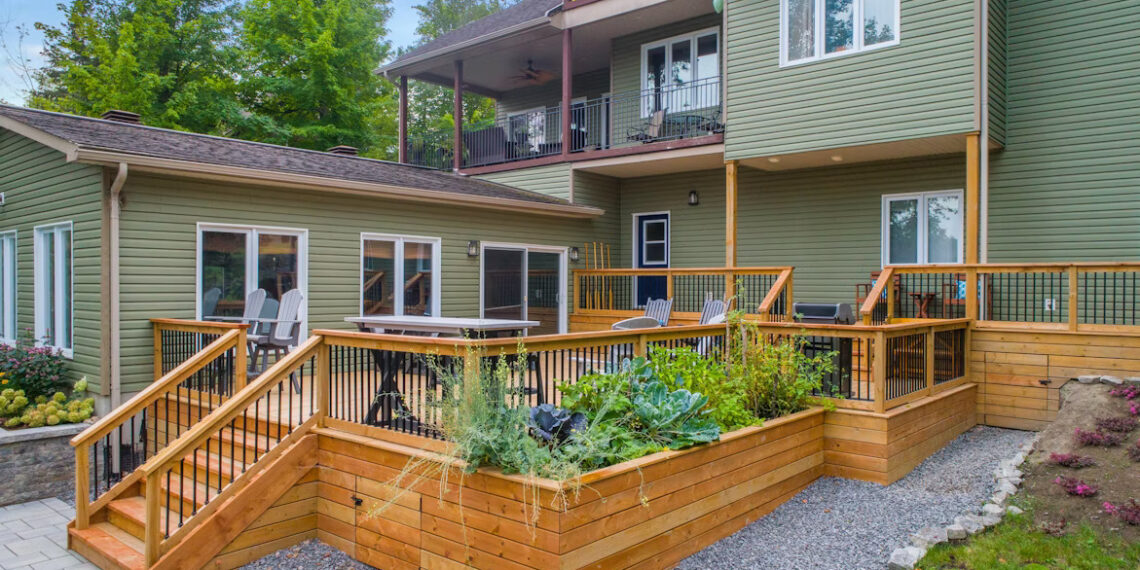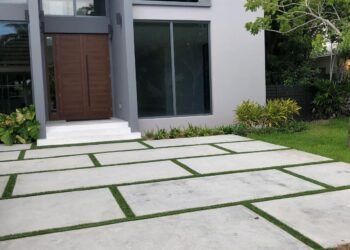Imagine stepping outside to a space built for slow mornings with coffee, golden-hour dinners and barefoot dance parties under the stars. A thoughtfully crafted deck is more than just another home upgrade — it’s a lifestyle shift. With the right design and materials, your deck can become the heartbeat of your backyard.
Tips for Deck Construction
From concept to completion, here’s how to create a deck that feels like an everyday escape.
1. Plan and Design With Purpose
Before you pick up a hammer or hire a contractor, think about how you’ll use your deck. Will it host big weekend BBQs or quiet morning yoga? Maybe both? Additionally, consider how many people you want to seat comfortably and whether you’ll need zones for dining, lounging or cooking.
Once you understand what you are looking for, study your site and local regulations. Are there local building codes for rules on size, height and material restrictions? You must present paperwork to avoid future problems, so consider visiting your local permit office or code enforcement department to stay compliant.
Where do you envision placing your deck? Take into account your site’s sun exposure, wind patterns and scenic views. Positioning your deck to catch the morning light can enhance your outdoor breakfast experience. If you prefer to bask in the glow of a sunset and the sun filtering through the trees, you might want to consider a different location.
The most inviting decks feel like seamless extensions of your home. Plan for smooth transitions between your house, deck and yard. Include functional features like stairs, railings and built-in benches. Look for different styles, possibilities and trends.
2. Choose Materials That Match Your Lifestyle
If you want a wooden deck that immerses you in nature, you have plenty of choices. Cedar resists damage from moisture, and redwood is naturally weather-resistant. Ipe is beautiful and its strength makes it resistant to dings, nicks or splits.
A budget-friendly option is pressure-treated pine, but you’ll need to seal it. Be cautious with pressure-treated wood. While economical, it’s treated with chemical preservatives to protect it from the elements, pests, fungi and decay. Because of this, it has been officially classified as hazardous waste in California.
If you want plastic, PVC and polythene are good options. They are waterproof and easy to clean, making them ideal for humid climates. Yet, plastic tends to get hot in direct sunlight and is often the priciest option. A middle-ground option is composite decking — like Trex, TimberTech or Fiberon — which is popular for its durability and low maintenance. However, it’s more expensive upfront.
An alternative is an aluminum deck, which is tough, rigid and slip-resistant. Once you choose, select the appropriate brackets and joist hangers to guarantee structural stability.
3. Build With Safety and Stability
Wear gloves, safety glasses and work boots. Use tools correctly and be cautious around buried electrical or plumbing lines. Once your safety gear is on, prepare the ground by digging out the area appropriate to your deck’s size and the ground’s existing level. After removing any obstructions, dig square holes to accommodate the deck footings.
Next comes the installation of deck blocks. Line the holes with weed mat to prevent weeds from growing under the deck. Then, add a layer of leveling sand to create a flat surface for the deck blocks. Adjust the sand beneath each block as needed to achieve the desired level.
With the base in place, you can build the frame depending on your specific dimensions. In this step, consider using joist hangers for secure connections. Reinforce the structure with corner braces and extra joist beam support as needed. Finally, anchor the deck using a shed anchor for added security and perform a final check for any leveling issues.
4. Protect and Personalize Your Space
Once you have it all set up, protect it. If you’re using wood, consider applying finishing and coatings to protect the surface from solar radiation and moisture. You can also treat wood with bio-based water repellents, which are environmentally friendly and reduce water uptake.
To maintain PVC, stabilizers like lead derivatives reduce degradation usually caused by heat, UV radiation or visible light. Clean your deck seasonally and inspect for loose boards or rusting hardware.
Now that your deck is functional, it’s time to decorate. Consider weather-resistant furniture, cozy rugs and ambient lighting. Add planters, string lights or even a pergola for shade. Built-in grills or outdoor kitchens elevate the experience further.
Transform a Deck Into a Backyard Retreat
With intentional planning and the right materials, your deck becomes more than an upgrade — it’s a personal haven. A well-crafted outdoor space adds value to your home and creates room for everyday joy. Whether it’s a morning coffee break or a dinner under the stars, your deck can set the stage for the moments that matter. Start sketching your vision and build a place where memories come naturally.









